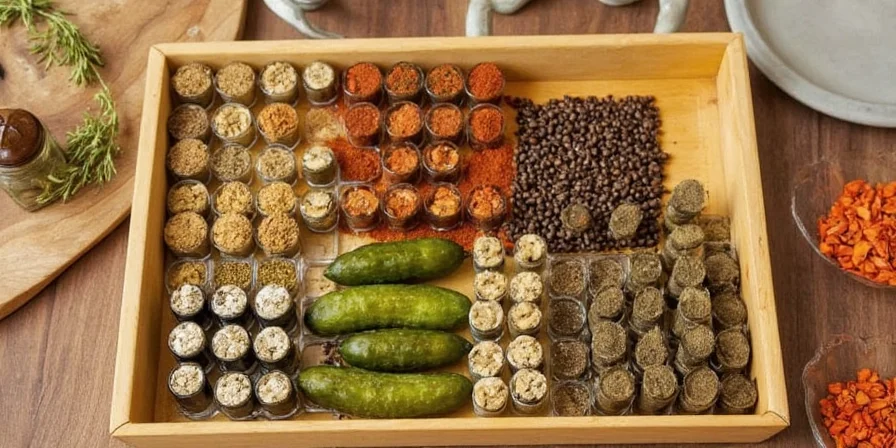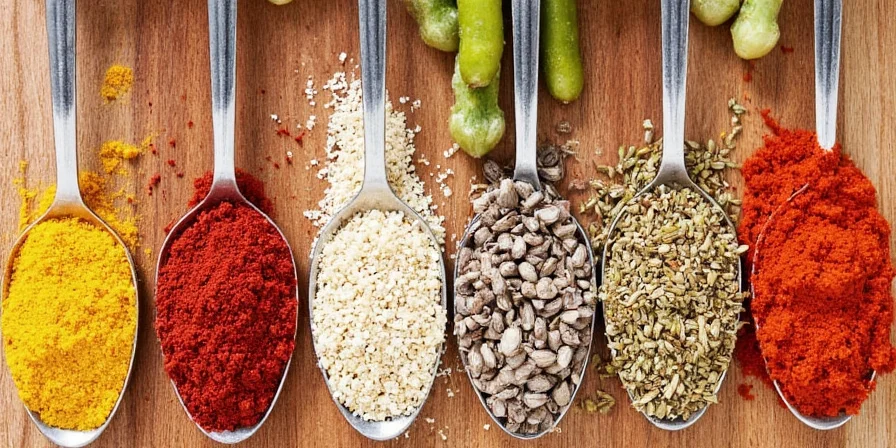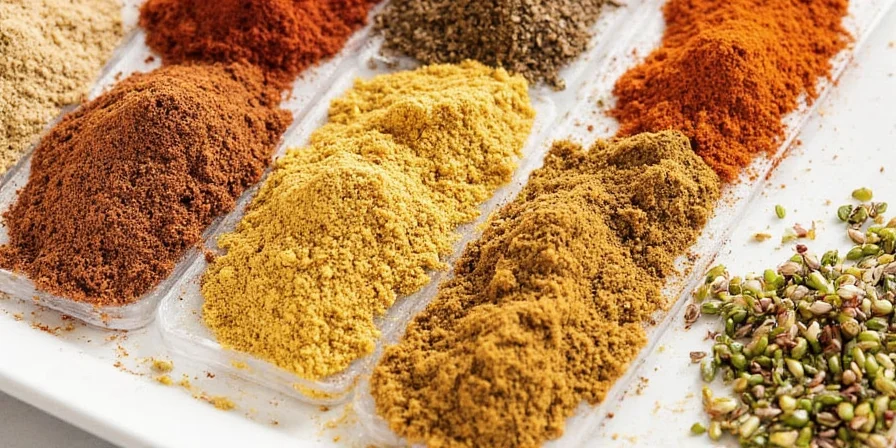The Art of Pickling: A Flavorful Journey with Spices

Pickling is more than just a method of preserving food—it's an ancient culinary art that transforms simple ingredients into tangy, vibrant, and incredibly flavorful delicacies. At the heart of this transformation are spices, which not only add depth and complexity to the flavor profile but also play a crucial role in the preservation process. In this blog, we'll dive into the world of pickling spices, focusing on one key player: coriander seeds. We'll explore their role in pickling, how to store them properly, and some clever usage hacks that will elevate your pickling game from amateur to pro.
What is Pickling, and Why Are Spices Important?
Pickling is the process of preserving food by soaking it in a brine solution—typically a mixture of salt, water, and vinegar. This process not only extends the shelf life of vegetables, fruits, and even meats, but it also enhances their flavor and texture. While vinegar is the main preservative, spices like coriander seeds, dill, mustard seeds, and bay leaves are often used to add a unique depth of flavor.
Spices in pickling serve multiple purposes:
- Flavor enhancement: They add layers of taste that make pickles more than just sour and salty.
- Preservation support: Some spices, like cloves and cinnamon, have antimicrobial properties that help in the preservation process.
- Aroma and visual appeal: Spices can add a beautiful color and aroma to your pickled goods, making them more appealing.
Among these, coriander seeds stand out for their earthy, slightly citrusy, and nutty flavor that pairs beautifully with the sharpness of vinegar and the saltiness of brine.
The Role of Coriander Seeds in Pickling
Coriander seeds are a staple in many pickling recipes, especially in Eastern European, Indian, and Middle Eastern cuisines. When used in pickling, they provide a warm, slightly sweet, and peppery note that complements the acidity of vinegar and the saltiness of the brine.
Here’s a quick breakdown of how coriander seeds work in the pickling process:
| Function | Coriander Seeds |
|---|---|
| Flavor Contribution | Earthy, nutty, slightly citrusy |
| Preservation Support | Mild antimicrobial properties |
| Visual Appeal | Light golden color that adds contrast |
| Texture | Hard and crunchy, adding a pleasant bite |
Whether you're making traditional dill pickles, Indian mango pickles, or spicy cucumber pickles, coriander seeds are a must-have in your spice arsenal.
Proper Storage of Coriander Seeds: The Key to Flavor Longevity
Even the best spices can lose their potency if not stored correctly. Coriander seeds are no exception. To ensure that your pickling spice stays fresh and flavorful, follow these storage hacks:
1. Store in a Cool, Dark Place
Heat and light are the enemies of spices. Store your coriander seeds in a cool, dark place—ideally a pantry or a spice drawer. Avoid storing them near the stove or in direct sunlight, as both can cause the oils in the seeds to break down, leading to a loss of flavor and aroma.
2. Keep Them in an Airtight Container
Moisture and air are the two biggest threats to the longevity of spices. Always store your coriander seeds in an airtight container. Mason jars, glass spice jars, or vacuum-sealed containers are all excellent options. Make sure the container is clean and dry before placing the seeds inside.
3. Avoid Humidity
High humidity can cause spices to clump together or even grow mold. Store your coriander seeds away from areas with high moisture, such as near the sink or in the bathroom.
4. Label and Date
It’s easy to forget when you bought your spices, but labeling and dating your spice jars can help you keep track of their freshness. Coriander seeds are best used within 6–12 months of purchase for optimal flavor.
5. Use Whole Seeds for Longevity
If you're not planning to use coriander seeds immediately, keep them whole. Whole seeds retain their flavor longer than ground spices. When you're ready to use them, you can grind them with a mortar and pestle or a spice grinder.
Coriander Seed Usage Hacks for Pickling
Now that we've covered how to store coriander seeds, let's move on to some clever ways to use them in your pickling adventures. These hacks will help you get the most out of this versatile spice:
1. Toast the Seeds Before Adding
Toasting coriander seeds before using them in pickling enhances their flavor. Simply heat a dry pan over medium heat and add the seeds. Stir constantly for 2–3 minutes until they turn slightly darker and release a fragrant aroma. This step adds a rich, nutty depth to your pickles.
2. Use in Combination with Other Spices
Coriander seeds work well with other pickling spices like mustard seeds, black peppercorns, and bay leaves. Try a combination of coriander seeds, mustard seeds, and dill for a classic dill pickle flavor. For a spicier kick, add some red pepper flakes or cayenne pepper to the brine.
3. Grind for a More Intense Flavor
If you want a more intense flavor, consider grinding the coriander seeds before adding them to the brine. Ground coriander releases more of its oils and flavors into the liquid, making your pickles more aromatic and flavorful.
4. Use in Different Pickling Methods
Coriander seeds can be used in various pickling methods, such as:
- Brine Pickling: Add whole or ground coriander seeds to the brine solution along with other spices.
- Oil Pickling: Infuse olive oil with coriander seeds for a rich and aromatic oil that can be used to pickle vegetables or drizzle over dishes.
- Spiced Vinegar: Create a spiced vinegar by steeping coriander seeds in vinegar for a few days. This can be used as a base for pickling or as a dressing for salads.
Each of these methods allows you to customize the flavor of your pickles to suit your taste.
5. Use in Fermented Pickles
Coriander seeds can also be used in fermented pickles, such as sauerkraut or kimchi. They add a warm, slightly sweet flavor that complements the tanginess of the fermented vegetables. Simply add a few whole coriander seeds to the brine or mix them into the vegetable mixture before fermentation begins.
Common Mistakes to Avoid When Using Coriander Seeds in Pickling
Even the best spices can be misused. Here are a few common mistakes to avoid when using coriander seeds in your pickling:
- Using too much: Coriander seeds can be overpowering if used in excess. Start with a small amount and adjust to taste.
- Using old or stale seeds: Old coriander seeds lose their flavor and aroma. Always use fresh seeds for the best results.
- Not toasting or grinding them: Whole, un-toasted coriander seeds may not release their full flavor potential. Toasting or grinding them can enhance the taste of your pickles.
- Adding them too late: For the best flavor, add coriander seeds early in the pickling process so they have time to infuse the brine.
By avoiding these mistakes, you can ensure that your pickles are consistently delicious and full of flavor.
Conclusion: Elevate Your Pickling with Coriander Seeds
Pickling is a simple yet powerful way to preserve and enhance the flavor of your favorite ingredients. With the right spices, especially coriander seeds, you can take your pickling to the next level. By storing your spices properly and using them in creative ways, you can create pickles that are not only delicious but also full of character and depth.
Whether you're making traditional dill pickles, spiced cucumber pickles, or fermented vegetable pickles, coriander seeds are a versatile and flavorful addition to your spice collection. So go ahead—grab some coriander seeds, follow these storage and usage hacks, and start experimenting with your own pickling creations.
Remember, the best pickles are made with care, attention to detail, and a little bit of spice. Happy pickling!

Now that you know the secrets to storing and using coriander seeds like a pro, it's time to get creative in the kitchen. Whether you're a seasoned pickler or just starting out, these tips will help you make pickles that are bursting with flavor and personality.
So, what are you waiting for? Grab your spices, your jars, and your favorite vegetables, and start pickling like a pro!
Enjoy the journey of flavor, preservation, and creativity that comes with pickling and spice usage. It's a world full of possibilities—and it all starts with a simple jar and a handful of coriander seeds.

With the right spices, the right techniques, and a little bit of patience, you can create pickles that are not only delicious but also a testament to your culinary skills. So go ahead—get pickling and let your spices do the talking.
Until next time, happy cooking and happy pickling!










 浙公网安备
33010002000092号
浙公网安备
33010002000092号 浙B2-20120091-4
浙B2-20120091-4